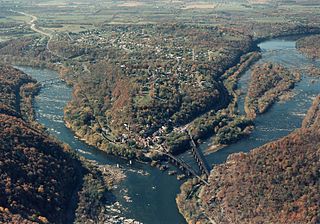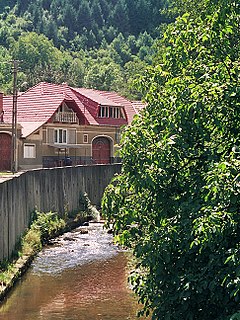| Arpaș River | |
|---|---|
 | |
| Location | |
| Country | Romania |
| Counties | Sibiu County |
| Villages | Arpașu de Sus, Arpașu de Jos |
| Physical characteristics | |
| Source | Confluence of headwaters Arpașul Mare and Podragu |
| - location | Făgăraș Mountains |
| Mouth | Olt |
| - location | Arpașu de Jos |
| - coordinates | 45°47′16″N24°37′09″E / 45.7877°N 24.6193°E Coordinates: 45°47′16″N24°37′09″E / 45.7877°N 24.6193°E |
| Length | 25 km (16 mi) |
| Discharge | |
| - location | Mouth |
| - average | 2.13 m3/s (75 cu ft/s) |
| Basin features | |
| Basin size | 82 km2 (32 sq mi) |
| Tributaries | |
| - left | Arpașul Mare, Albota, Plăvaia, Arpășel |
| - right | Podragu |
| Progression | Olt→ Danube→ Black Sea |
The Arpaș River (Hungarian : Árpás-patak) is a left tributary of the river Olt in Romania. It discharges into the Olt in Arpașu de Jos. It starts at the confluence of two headwaters Arpașul Mare and Podragu

Hungarian is a Finno-Ugric language spoken in Hungary and several neighbouring countries. It is the official language of Hungary and one of the 24 official languages of the European Union. Outside Hungary it is also spoken by communities of Hungarians in the countries that today make up Slovakia, western Ukraine (Subcarpathia), central and western Romania (Transylvania), northern Serbia (Vojvodina), northern Croatia, and northern Slovenia. It is also spoken by Hungarian diaspora communities worldwide, especially in North America and in Israel. Like Finnish and Estonian, Hungarian belongs to the Uralic language family. With 13 million speakers, it is its largest member in terms of speakers.

A tributary or affluent is a stream or river that flows into a larger stream or main stem river or a lake. A tributary does not flow directly into a sea or ocean. Tributaries and the main stem river drain the surrounding drainage basin of its surface water and groundwater, leading the water out into an ocean.

The Olt is a river in Romania. It is 615 km (382 mi) long, and its basin area is 24,050 km2 (9,290 sq mi). It is the longest river flowing exclusively through Romania. Its source is in the Hășmaș Mountains of the eastern Carpathian Mountains, near Bălan, rising close to the headwaters of the Mureș River. It flows through the Romanian counties Harghita, Covasna, Brașov, Sibiu, Vâlcea and Olt. The river was known as Alutus or Aluta in Roman antiquity. Olt County and the historical province of Oltenia are named after the river.








